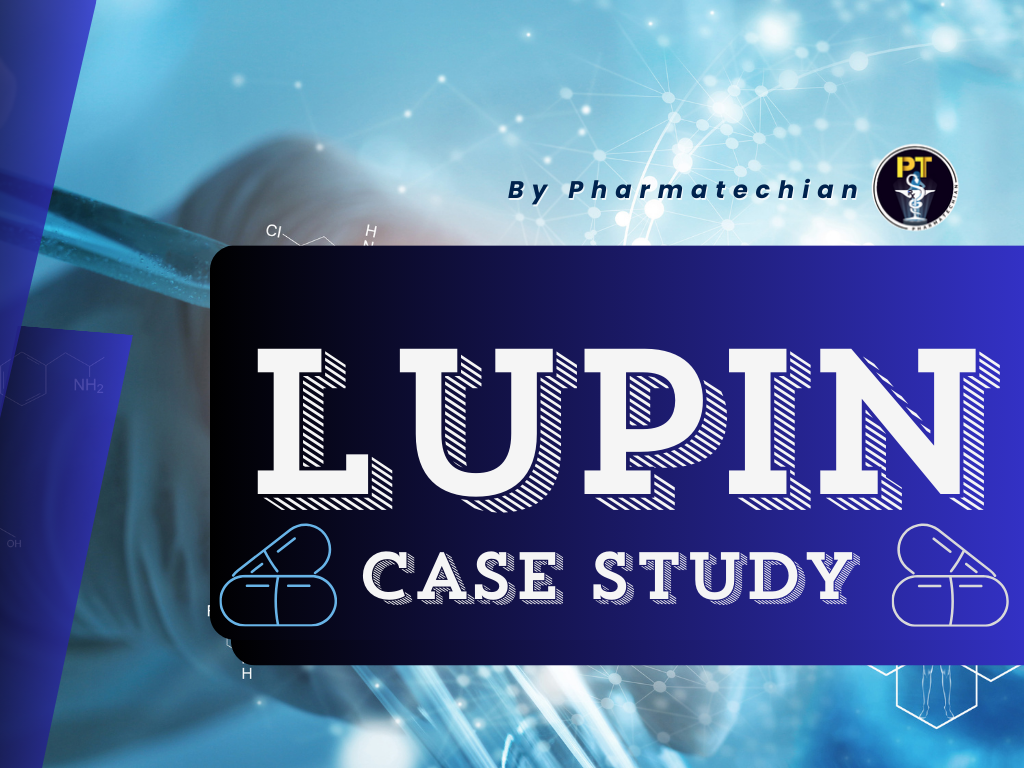
1. Growth and Expansion Strategy of Lupin
Overview:
Lupin Ltd., a leading pharmaceutical company, has grown exponentially through strategic mergers and acquisitions (M&A), robust R&D investments, and aggressive market penetration strategies.
Key Milestones:
- 1999: Acquired its first overseas manufacturing facility in the U.S.
- 2007: Acquired Kyowa Pharmaceutical Industry Co., Ltd. in Japan, marking its entry into the Japanese market.
- 2015: Acquired Gavis Pharmaceuticals LLC in the U.S. for $880 million, enhancing its presence in the world’s largest pharma market.
Mergers and Acquisitions:
Lupin’s M&A strategy has focused on entering new markets and expanding its product portfolio, particularly in the U.S., Europe, and Japan. These acquisitions have contributed significantly to Lupin’s global market presence.
Market Penetration:
Lupin has utilized a mix of generic drug launches, local partnerships, and strategic pricing to penetrate highly regulated markets like the U.S. and Japan, making it one of the top generics players globally.
Graphical Representation:
2. Innovation and R&D in Lupin
Overview:
R&D has been central to Lupin’s strategy, focusing on developing complex generics, biosimilars, and innovative drug delivery systems.
Innovation Pipeline:
- Complex Generics: Lupin has developed complex generics, particularly in respiratory and cardiovascular segments.
- Biosimilars: Investments in biosimilars have positioned Lupin as a key player in the emerging biosimilar market.
- Technological Advancements: Lupin’s R&D centers across India, U.S., and Japan are equipped with cutting-edge technology to support drug development.
Strategic Partnerships:
Collaborations with research institutions and global pharmaceutical companies have enhanced Lupin’s innovation capabilities.
Graphical Representation:
3. Challenges and Regulatory Compliance
Overview:
Lupin faces significant challenges in regulatory compliance, patent laws, and international trade.
Key Challenges:
- Regulatory Compliance: Complying with stringent regulations in markets like the U.S. and EU.
- Patent Laws: Patent litigations, particularly in the U.S., have posed challenges to product launches.
- International Trade: Navigating trade restrictions and tariffs, especially in the post-Brexit and COVID-19 era.
Navigation Strategies:
Lupin has invested in compliance and legal teams to manage these challenges and maintain its market position.
Graphical Representation:
4. Impact of COVID-19 on Lupin
Overview:
The COVID-19 pandemic significantly impacted Lupin’s operations, supply chain, and market strategy.
Adaptations:
- Supply Chain: Enhanced supply chain resilience by diversifying suppliers and increasing inventory levels.
- Product Offerings: Focused on COVID-related drugs, such as antivirals and respiratory treatments.
- Operations: Implemented remote working and digital tools to maintain business continuity.
Long-Term Effects:
Lupin has accelerated its digital transformation and increased its focus on essential medicines.
Graphical Representation:
5. Market Penetration and Globalization
Overview:
Lupin has employed aggressive market penetration strategies to expand its presence globally.
Strategies:
- Emerging Markets: Focused on high-growth markets in Asia, Africa, and Latin America.
- Developed Markets: Strategic acquisitions and partnerships in the U.S., Europe, and Japan.
- Overcoming Barriers: Leveraged local partnerships and customized product offerings to navigate regulatory and competitive barriers.
Graphical Representation:
6. Corporate Social Responsibility (CSR) and Ethical Practices
Overview:
Lupin is committed to CSR, focusing on public health, education, and environmental sustainability.
CSR Initiatives:
- Public Health: Initiatives like the Lupin Human Welfare & Research Foundation (LHWRF) focus on healthcare accessibility.
- Education: Scholarships and educational programs in underserved communities.
- Environmental Sustainability: Efforts to reduce carbon footprint, waste management, and sustainable sourcing.
Impact:
These initiatives have strengthened Lupin’s brand and enhanced its reputation as a socially responsible company.
Graphical Representation:
7. Supply Chain Management and Operational Efficiency
Overview:
Lupin has developed a robust supply chain management system to ensure operational efficiency.
Key Strategies:
- Timely Delivery: Use of advanced logistics and real-time tracking to ensure timely delivery of products.
- Cost Management: Strategic sourcing and inventory management to reduce costs.
- Quality Standards: Implementation of strict quality controls across all manufacturing units.
Role of Technology:
Advanced analytics, AI, and blockchain have been integrated into the supply chain to optimize operations and enhance transparency.
Graphical Representation:
8. Competitor Analysis and Market Position
Overview:
Lupin competes with top global pharmaceutical companies in both generics and specialty segments.
Competitor Comparison:
- Market Position: Among the top 10 generic companies globally.
- Product Portfolio: Strong in respiratory, cardiovascular, and anti-infective segments.
- Pricing Strategies: Competitive pricing in generics while maintaining quality.
Differentiation:
Lupin differentiates itself through a focus on complex generics, biosimilars, and its strong presence in emerging markets.
Graphical Representation:
9. Sustainability and Environmental Impact
Overview:
Lupin is committed to sustainability, focusing on reducing environmental impact and enhancing resource efficiency.
Key Initiatives:
- Waste Management: Recycling and waste reduction programs in all facilities.
- Carbon Footprint: Initiatives to reduce greenhouse gas emissions and energy consumption.
- Sustainable Sourcing: Focus on sourcing raw materials responsibly.
Future Plans:
Lupin aims to further reduce its carbon footprint and achieve greater sustainability in its operations.
Graphical Representation:
10. Financial Performance and Investment Strategies
Overview:
Lupin’s financial performance has been driven by strategic investments in R&D, acquisitions, and global market expansion.
Key Metrics:
- Revenue Growth: Consistent revenue growth driven by global expansion and product diversification.
- Profitability: Focus on high-margin products in specialty segments.
- Capital Allocation: Strategic investments in R&D and manufacturing facilities.
Influence on Success:
These financial strategies have positioned Lupin as a leading global pharmaceutical company.
Graphical Representation:
11. Problems in the Company or Challenges
Overview:
Despite its growth, Lupin faces several challenges, including regulatory hurdles, patent disputes, and intense competition.
Major Challenges:
- Regulatory Hurdles: Navigating complex regulations in multiple markets.
- Patent Disputes: Legal challenges related to patent expirations and infringements.
- Competition: Competing with other global pharmaceutical giants in both generics and branded segments.
Response:
Lupin has invested in compliance, legal expertise, and innovation to address these challenges.
Graphical Representation:
12. Future Plans
Overview:
Lupin’s future strategy focuses on expanding its global footprint, enhancing its product portfolio, and investing in digital health initiatives.
Strategic Focus:
- Global Expansion: Penetrate high-growth markets and increase its presence in developed countries.
- R&D Investments: Continued focus on complex generics, biosimilars, and innovative drug delivery systems.
- Digital Transformation: Embrace digital health initiatives, including telemedicine and e-pharmacy, to improve patient access.
Graphical Representation:
13. Adoption of Artificial Intelligence and Blockchain
Overview:
Lupin has started integrating AI and blockchain to enhance its operations and maintain a competitive edge.
AI and Blockchain Adoption:
- AI in Drug Discovery: Leveraging AI to accelerate drug discovery and optimize clinical trials.
- Blockchain in Supply Chain: Implementing blockchain to ensure supply chain transparency and reduce the risk of counterfeit drugs.
Impact:
AI and blockchain have improved Lupin’s operational efficiency, reduced costs, and strengthened regulatory compliance.
Graphical Representation:
Author




